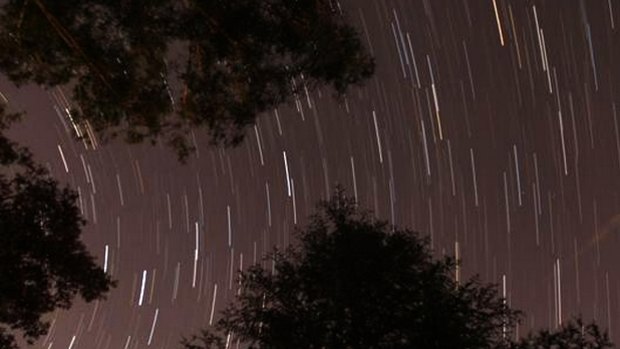By Stephanie Brownlee
Prep the picnic blankets and hot coffee thermoses. This year Queenslanders could witness a rare twilight show of flying meteors in the South East sky.
The shower of Perseids - bright shards of debris falling from the famous Comet Swift-Tuttle - is estimated to be visible as they peak from approximately 3am Brisbane time on Friday, August 14.

"Once a year, the Earth's orbit brings us through this debris causing the Perseids."
Occurring between July and August each year, the celestial spectacle is typically more impressive and easier to observe for those living in the northern hemisphere.
However, as the Perseids are set to coincide with a new moon, meaning a darker sky than usual, it may be possible for early bird Queenslanders to get a glimpse of meteors shooting up from the horizon.
Professor of astrophysics at the University of Queensland Michael Dinkwater says that while the earth is continually receiving little showers of material from space, this is a time where it is particularly noticeable.
"Most of it is stationary debris left from a comet that orbits through our part of the solar system," says Professor Drinkwater.
"Once a year the Earth's orbit brings us through this debris causing the Perseids."
"The name comes from Perseus, the constellation in the direction the meteors radiate from."
"The Perseids are very small pieces of rock, moving extremely fast when they hit our atmosphere."
"The friction causes them to burn up before they hit the ground but they make lots of light because they've got so much energy."
"If you're in the city of Brisbane, it may be challenging to see them because of artificial lights – you'd be best to go out west."
Indeed, six South-East Queensland-based astronomy clubs have come together for Astrofest at Lions Camp Duckadang, inland from the Sunshine Coast, hoping to witness the event.
Currently at Astrofest, vice president of the Brisbane Astronomical Society Tony Surma-Hawes says that Queensland will not see the high Zenithal hourly rate of meteors falling that the northern hemisphere will, but may see a more sporadic shower.
"Twilight is the best time to look for them or even earlier if you can wake up," says Mr Surma-Hawes.
"The reason why it's better for us to see the meteors in the morning is because at this point the Earth is turning into the direction we're travelling through space."
"It is similar to how bugs hit the windscreen of a car when you drive towards them, if that's a good analogy."
"In the evening we tend not to see them as often as we're turning away."
"Although the morning should be a better time for us to see the Perseids peak, there's no guarantee of when to predict them."
"Take the time to just stand there, sip your cup of coffee and enjoy the morning clear sky, it's absolutely stunning."